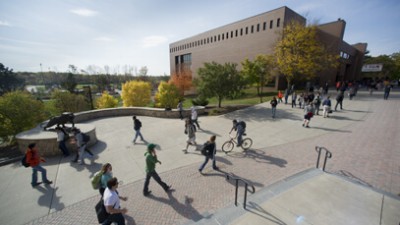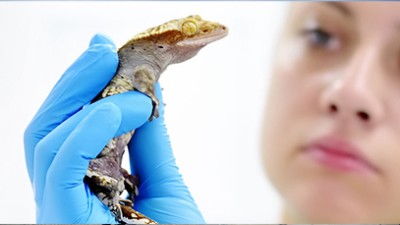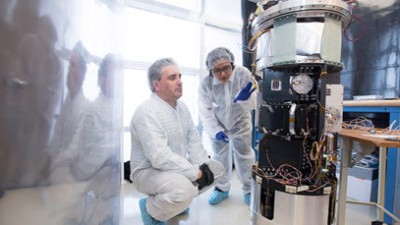News
Astrophysical Sciences and Technology MS
-
October 4, 2021

Astrophysical sciences and technology Ph.D. student receives DOE award to study dark matter
RIT’s Peter Craig is one of 65 graduate students from 29 states to receive an award from the U.S. Department of Energy’s Office of Science Graduate Student Research (SCGSR) program. He will conduct research at Lawrence Berkeley National Laboratory.
-
June 29, 2021

Scientists detect gravitational waves for the first time from black holes swallowing neutron stars
For the first time, scientists detected gravitational waves caused by mergers between black holes and neutron stars. Researchers from RIT’s Center for Computational Relativity and Gravitation (CCRG) helped identify key characteristics about the merger events.
-
June 17, 2021

CIBER-2 experiment successfully completes first flight
Led by principal investigator Michael Zemcov, an assistant professor in RIT’s School of Physics and Astronomy and Center for Detectors, the experiment aims to better understand extragalactic background light, which traces the history of galaxies back to the formation of the first stars in the universe.
-
May 12, 2021

RIT Outstanding Graduate Woman Achievement Award highlights Graduate Student Advisory Council leaders
RIT students Emily Wilson and Teresa Symons are co-recipients of the Outstanding Graduate Woman Achievement Award for their dedication and leadership on RIT’s Graduate Student Advisory Council. Wilson and Symons are Ph.D. students in the astrophysical sciences and technology program in the School of Physics and Astronomy and co-chairs of the Graduate Student Advisory Council.
-
April 28, 2021

Ph.D. students complement academic research with internships and co-ops
Undergraduates aren’t the only students taking advantage of RIT’s co-op and internship program. Across the university, Ph.D. students are securing prestigious work experiences to provide important gateways to careers in industry, foundations, and government.
-
February 19, 2021

Rochester optics on landed Mars rover Perseverance
WROC-TV interviews Michael Richmond, professor of physics and astronomy, about NASA's Mars 2020 Perseverance rover.
-
January 27, 2021

Say Goodbye To 2020 With The Year’s Top 10 Hubble Photos
Forbes features work by Joel Kastner, professor in the Chester F. Carlson Center for Imaging Science and program faculty in the astrophysical sciences and technology graduate program, in its 10 most important Hubble photos from 2020.
-
January 15, 2021

Astronomers dissect the anatomy of planetary nebulae using Hubble Space Telescope images
Images of two iconic planetary nebulae taken by the Hubble Space Telescope are revealing new information about how they develop their dramatic features. Researchers from RIT and Green Bank Observatory presented new findings about the Butterfly Nebula and the Jewel Bug Nebula at the 237th meeting of the American Astronomical Society on Friday, Jan. 15.
-
January 15, 2021

College of Science experiences boom in sponsored research
Several School of Physics and Astronomy faculty secured large grants as principal investigators during a banner summer.
-
December 16, 2020

Scientists complete yearlong pulsar timing study after reviving long-dormant radio telescopes
While the scientific community grapples with the loss of the Arecibo radio telescope, astronomers who recently revived a long-dormant radio telescope array in Argentina hope it can help modestly compensate for the work Arecibo did in pulsar timing.
-
October 29, 2020

LIGO and Virgo announce 39 new gravitational wave discoveries during first half of third observing run
The LIGO Scientific Collaboration and Virgo Collaboration released a catalog of results from the first half of its third observing run (O3a), and scientists have detected more than three times as many gravitational waves than the first two runs combined. Several researchers from RIT’s Center for Computational Relativity and Gravitation were heavily involved in analyzing the gravitational waves and understanding their significance.
-
September 9, 2020

RIT scientists contribute to the first discovery of an intermediate-mass black hole
The LIGO Scientific Collaboration and the Virgo Collaboration recently announced the discovery of GW190521, the most massive gravitational wave binary observed to date, and Rochester Institute of Technology scientists played an important role in identifying and analyzing the event.




